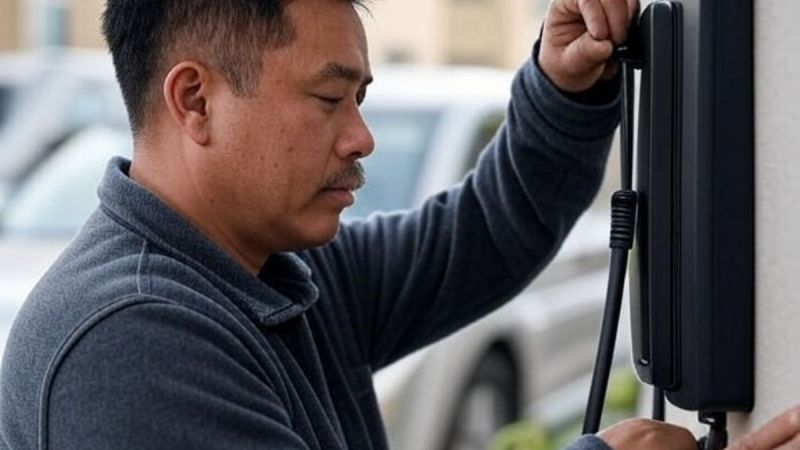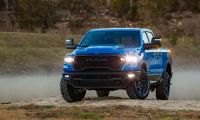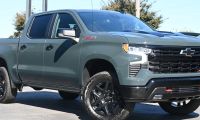Some things you expect when buying a Tesla - smooth acceleration, cutting-edge tech, maybe the occasional software glitch. But what you don’t expect is the wall you’ll hit when you go to plug in at home… and realize you can’t. That’s the reality Kiara Vanessa shared in the Tesla Tips & Tricks Facebook group, and it sparked a flurry of ideas, suggestions, and debates that any Tesla renter needs to read. Her post struck a nerve - and for good reason.
“I’m renting and landlord is not letting me install a Tesla charger,” Kiara wrote. “There’s a regular outlet in the garage. What charger would you recommend that I use? I understand it will take hours to charge but better than nothing.”
This scenario isn’t rare. It's part of a surprisingly unchecked and under-discussed issue that affects thousands of EV owners: charging when you don’t own your home. Whether it’s an apartment or a rented house, this is where reality hits the accelerator and swerves right past ideal conditions. And if you’re thinking about going electric, or already have and feel trapped with charging options, you’re going to want to hear how this plays out.
Why Landlords Say No To EV Chargers
Before we get into chargers, let's talk about the wall - figurative and literal - that Kiara is up against: the landlord.
It’s easy to be frustrated. You're paying rent, the car is yours, and the idea of just adding a wall charger sounds harmless enough. But from the landlord’s side, things get complicated fast. Wiring upgrades, permitting, property liability, and insurance restrictions all become part of the conversation. Alex Gruszczyk, another group member and a landlord himself, chimed in with a point that may surprise many Tesla renters:
“As a landlord I would advise you to disclose this. Insurance companies are becoming nightmares for EV chargers, and if they said no, you can be held responsible.”
This paints a bigger picture. While Tesla’s Wall Connector and third-party chargers are designed with safety in mind, home electrical modifications - even small ones - can lead to legal and insurance consequences. That’s probably why some landlords won’t even consider it.
But that doesn’t mean you’re out of options.
From Dryer Outlets to Mobile Chargers: What Other Tesla Owners Are Doing
Other group members didn’t skip a beat in offering alternatives. The first suggestion? Check if there’s a dryer outlet.
“We did this temporary until our electrician put a splitter on the dryer plug,” wrote Kayla.
Zaira echoed that route:
“I rent and this is how I charge my car. However, I will say I had the option to install but opted not to.”
It’s a surprisingly pleasant workaround for renters who can’t install a dedicated charger. A dryer outlet (usually NEMA 14-30 or 10-30) runs at 240 volts, far better than your average household 120v plug. It’s not lightning-fast, but it’s fast enough for overnight charging if your driving habits are typical.
If you don't have a dryer outlet or can't access one, the Tesla Mobile Connector remains your friend. It ships with most Teslas and includes a 120v adapter that works with any regular wall plug. Yes, it’s slow - painfully slow for some - but it gets the job done for light daily commuting.
“Normal Tesla mobile charger will come with the 120v 15a adapter. Should see 3 mi/hr range charging,” said Michael Paup.
Heather Brackman added, “I charge with a 110v outlet for daily commuting and have no issues. Get about 20-25% charge a night.”
And that’s the unexpected twist: sometimes the simplest solution really is enough. Especially if you’re driving short distances or have access to charging at work or nearby public chargers.
The Emerging Role of Shared Charging Infrastructure
What Kiara’s post highlights is something we’ve been exploring over at Torque News in owning a Tesla without home charging—an increasingly common experience. Whether you're renting or live in a multifamily home, lack of dedicated EV charging can be a dealbreaker. It’s a situation that has pushed some Tesla owners to say “I won’t ever buy Tesla again. We moved to an apartment, it takes too long to charge.”
But for others, it’s become a manageable reality. As Jose Chaves put it:
“I also rent and honestly I just use the normal plug charger and I have no complaints. I do live within a 5-minute drive of a supercharger so if I need to charge quick, I go there. I have a 2021 M3 so I don’t have to charge to 100%. I’ve gotten from 50% to 80% overnight. No complaints from me using the lowest tier charger!”
Jose’s experience touches on something valuable: strategic charging. Many Tesla owners are learning to adapt based on location, available infrastructure, and driving needs. It’s not perfect, but it's workable.
If you're nervous about this or thinking twice about buying a Tesla because of charging, you’re not alone—and there are plenty of options worth exploring.
Why This Problem Isn't Going Away Anytime Soon
Here’s the kicker: Kiara’s problem isn’t going away, and it’s bigger than just her garage outlet. The challenge of EV charging in rental and multifamily homes is a national one. It's prompting legal action, housing policy changes, and even community debates. Just ask the Tesla Cybertruck owner who’s battling his HOA over installing a charger.
Creating equitable access to EV charging is complex. As we explored in this deep dive on what's needed to create EV charging for multifamily homes, it’s not just about hardware. It’s about zoning, utility partnerships, insurance policy, and yes, landlord cooperation.
The Bigger Picture: Living with EV Limitations (And Still Winning)
There’s a broader need being met here - independence from gas stations, cost savings, and the quiet thrill of driving electric. Products like portable Level 2 chargers with interchangeable adapters exist not just to solve logistical problems, but to empower renters, apartment dwellers, and even those on road trips to take charging into their own hands. It’s not always perfect, but it’s progress.
The ethical wrinkle? As EV adoption surges, renters - often lower-income drivers or those living in dense cities - face barriers their homeowning peers do not. It’s one thing to market Teslas as the future. It’s another thing to ensure that future is accessible and fair.
How to Find EV-Friendly Rental Homes or Apartments Before You Move
Let’s be real - no one wants to move into a new place only to realize their EV lifestyle just hit a brick wall. That’s exactly the kind of scenario Kiara found herself in. So if you're an EV driver (or about to become one), here's the part of the article that might save you a whole lot of frustration down the road—literally.
Before you sign that lease, ask yourself: “Can I plug in here - every night - without it becoming a hassle?” If you're not asking that, you might be setting yourself up for the same headaches Kiara is now dealing with.
Start by filtering for properties with garages, driveways, or dedicated parking - the absolute minimum requirement. On most platforms like Zillow, Apartments.com, or even Craigslist, you can use filters or keyword searches like “EV charger,” “garage,” or “dedicated parking with outlet.”
But don’t stop at what the listing says. Always ask the landlord or leasing agent directly:
- Is there a standard 120v outlet in the garage or near the parking space?
- Is there already a 240v outlet, or room in the panel to install one later?
- Are EV chargers allowed to be installed by tenants if they pay the cost?
The answer to these three questions can make or break your decision.
EV drivers in online communities also suggest checking for nearby public charging options. Use PlugShare or ChargePoint to map out your new neighborhood in advance. If you’re going to rely on public chargers - or a nearby Supercharger like Jose Chaves mentioned - it better be super close and not constantly full.
You should also look into rental communities that actively market themselves as EV-friendly. This is becoming a trend, especially in newer apartment complexes. Some list EV-ready as a perk, which usually means they’ve installed shared charging stations or at least wired the property for future installs.
If you want to dig deeper into this, I highly recommend reading what’s needed to create EV charging in multifamily homes. That piece dives into the bigger infrastructure and policy issues at play - and might help you understand why some landlords are hesitant while others are charging ahead (pun intended).
This kind of due diligence is no longer optional for EV owners - it’s a new part of the rental checklist, right next to washer/dryer hookups and pet policies. It’s not just about convenience, either - it can make the difference between loving your Tesla or regretting your lease.
How Tesla Owners Do It Without Ideal Charging Setups?
Kiara’s story is far from unique - but her question opened up a real, relatable discussion on how Tesla owners make it work without ideal charging setups. If you're in the same boat, you’re not alone, and you’re not out of options.
So what’s your experience been like? Have you faced the same charging challenges as a renter or apartment dweller? Do you rely on wall outlets, dryer plugs, or just live near a Supercharger?
Share your experience below in the comments. We’d love to hear how you’re making EV life work in a world not quite ready for it yet.
Armen Hareyan is the founder and Editor-in-Chief of Torque News. He founded TorqueNews.com in 2010, which since then has been publishing expert news and analysis about the automotive industry. He can be reached at Torque News Twitter, Facebook, Linkedin, and Youtube. He has more than a decade of expertise in the automotive industry with a special interest in Tesla and electric vehicles.
Image source: Grok.













Comments
"What charger would you…
Permalink
"What charger would you recommend that I use?"
In order to answer that question I myself have to ask this question to you: How far do you drive on a daily basis?
You’re asking for extra…
Permalink
You’re asking for extra current, measured in amperage. This cannot be delivered without an upgrade from your power supplier.
My car came with the Tesla…
Permalink
My car came with the Tesla low speed charger, and I have no complaints.
My apt complex isn't able to…
Permalink
My apt complex isn't able to accommodate adding another 240V/ 50A circuit to the existing panel, so I was able to access my dryer plug, which is adjacent to the garage. I ran a 10' 50A power cord through the wall to connect my garage charger. I must say, 240V rapid charging is certainly a game change.